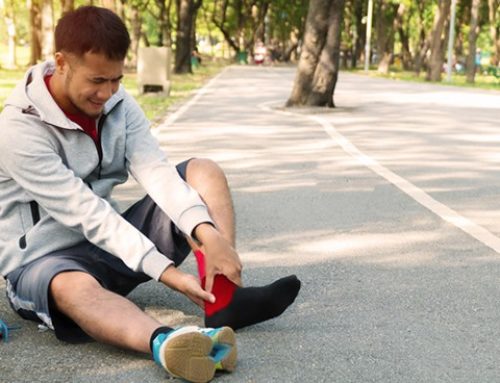Reduce Your Odds of Suffering Low Back Pain
About 90 percent of athletes experience low back pain at some point in their lives. But there are things you can do to minimize the risk of suffering a back injury.
Low back pain stems from weakness in the pelvis, hips and abdominal areas, which are made up of about 20 different muscles, including the core muscles.
If your lower abdominal muscles are not firing properly, other muscles will overcompensate. This can weaken your lower back and send your entire back out of alignment.
Tips for reducing the odds of experiencing low back pain
- See your doctor if you experience chronic or severe low back pain. Early detection is key.
- Stretching will do little. Stretching places stress on the upper spinal column. It’s better to modify your posture. Sit tall and don’t slouch.
- Use your core to stabilize your lower back and align your spine.
- Press your shoulders back toward your shoulder blades and open your chest.
- Keep your chin high and your neck mobile
Before you start training your core, have a doctor look at your spine for any abnormalities to make sure you do not aggravate an existing problem.
Read more:
- 3 Exercises to Alleviate Low Back Pain
- Avoid Low Back Pain With This Stretching Technique
- Managing Back Pain
Source:
Hodges, P. (1996). “Inefficient muscular stabilization of the lumbar spine associated with low back pain.” SPINE, 21(22), 2640-50.
RECOMMENDED FOR YOU
MOST POPULAR
Reduce Your Odds of Suffering Low Back Pain
About 90 percent of athletes experience low back pain at some point in their lives. But there are things you can do to minimize the risk of suffering a back injury.
Low back pain stems from weakness in the pelvis, hips and abdominal areas, which are made up of about 20 different muscles, including the core muscles.
If your lower abdominal muscles are not firing properly, other muscles will overcompensate. This can weaken your lower back and send your entire back out of alignment.
Tips for reducing the odds of experiencing low back pain
- See your doctor if you experience chronic or severe low back pain. Early detection is key.
- Stretching will do little. Stretching places stress on the upper spinal column. It’s better to modify your posture. Sit tall and don’t slouch.
- Use your core to stabilize your lower back and align your spine.
- Press your shoulders back toward your shoulder blades and open your chest.
- Keep your chin high and your neck mobile
Before you start training your core, have a doctor look at your spine for any abnormalities to make sure you do not aggravate an existing problem.
Read more:
- 3 Exercises to Alleviate Low Back Pain
- Avoid Low Back Pain With This Stretching Technique
- Managing Back Pain
Source:
Hodges, P. (1996). “Inefficient muscular stabilization of the lumbar spine associated with low back pain.” SPINE, 21(22), 2640-50.












